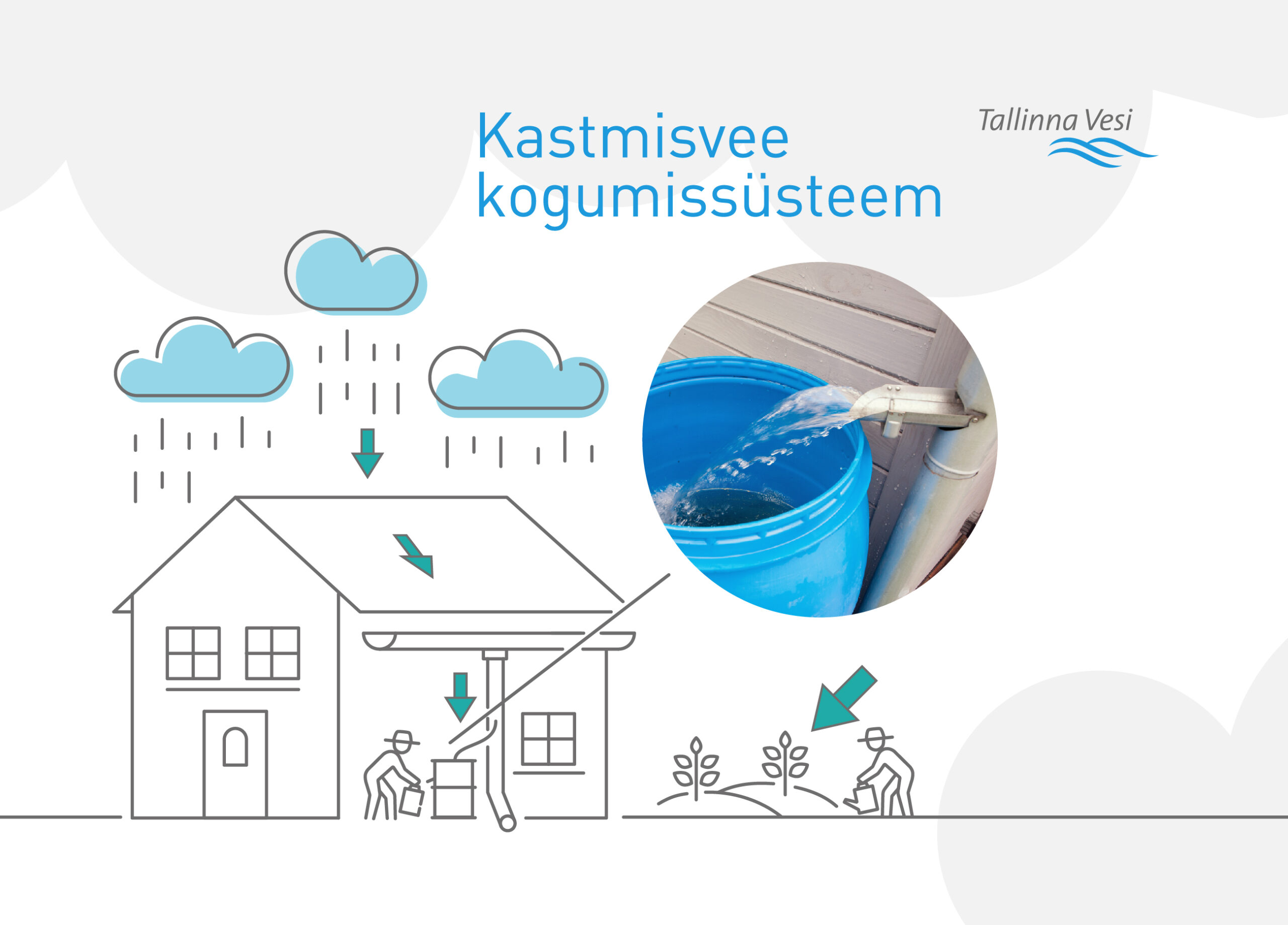Using harvested rainwater is a sustainable and convenient option for watering plants. There are various ways to do this. Read more about from the news.
Why should I harvest rainwater for watering plants?
It takes chemicals, electricity and heat, as well as manpower to treat and produce drinking water. For example, in the past, the Tallinners have used 24,375,000 litres of irrigation water just in one year. Considering that an average bathtub holds 150 litres of water, this means that a total of approximately 162,500 bathtubs of water were used. This is a very large amount and the resources used to treat it could be saved by preferring to harvest rainwater. In doing so, you can reduce your environmental footprint and save money, as you no longer need to pay for treated drinking water.
Clean water as an important natural resource should be handled sparingly. Although there is no immediate risk of running out of water in Tallinn where customers are mainly supplied with drinking water produced from surface water, we need to think about the reasonable use of clean water also here. While the water resources in Lake Ülemiste are ensured by means of an extensive surface water catchment system, a long period of drought and increased water demand may have an impact on its ability to meet the citizens’ water need also here.
In areas where drinking water is produced from groundwater, water companies have been set limits on the abstraction from groundwater resources. This, in turn, sets limits on how much domestic water can be used by residents. An increased water usage during periods of drought due to watering could test the system’s ability to provide water for human consumption and lead to water resources shrinking to dangerous levels. At worst, over-consumption may result in a so-called “depression funnel” where groundwater levels are reduced, causing seawater intrusion into groundwater.
How can I harvest rainwater?
Instead of watering plants with treated drinking water, we recommend our consumers to harvest rainwater. There are various ways to do this.
As a simple and quick solution, we recommend to get a water tank and connect it to a gutter so that rainwater can be channeled to the tank. That way, you can fill your watering can from the tank and water the plants.
A more comprehensive solution, suitable for larger water needs, is to set up an underground water tank near the drainage pipeline outlet and channel rainwater into the tank using drainage. This will allow you to use water from the tank for irrigation by means of pumps.
Although getting a water tank or setting up a more comprehensive system for harvesting rainwater first requires investments, preferring renewable natural resource for irrigation will be for the benefit of both the consumer and the environment in the long term. Therefore, as the most eco-friendly solution, we recommend all our customers collecting and using primarily rainwater for watering purposes.
